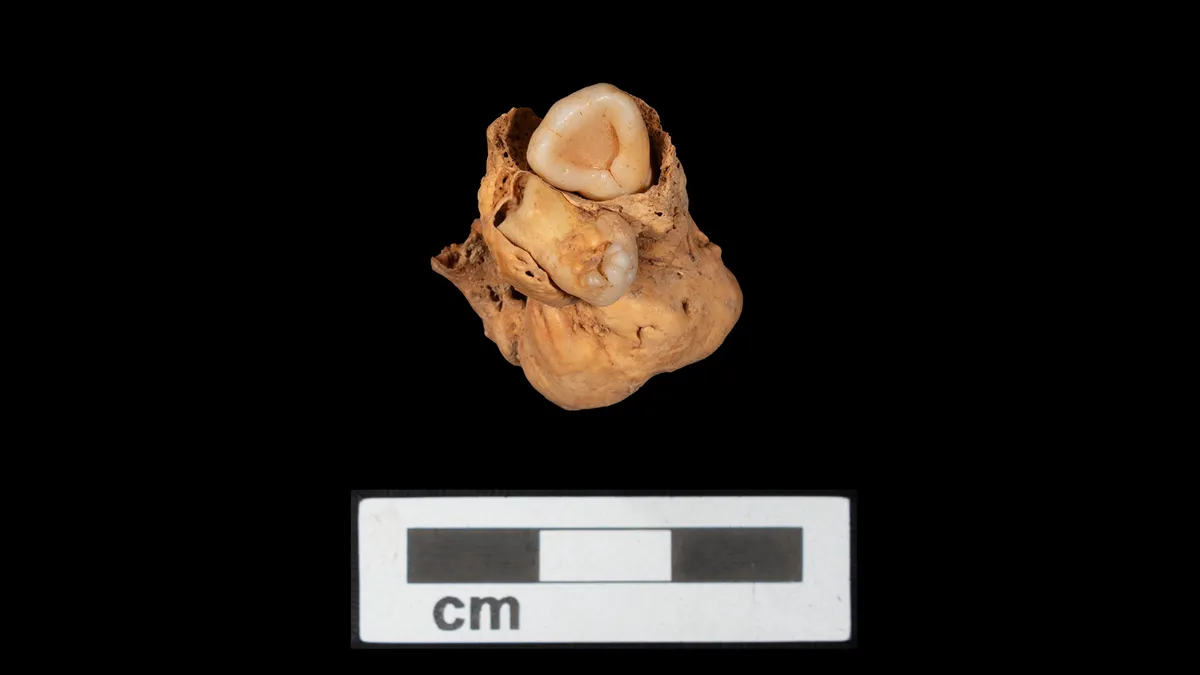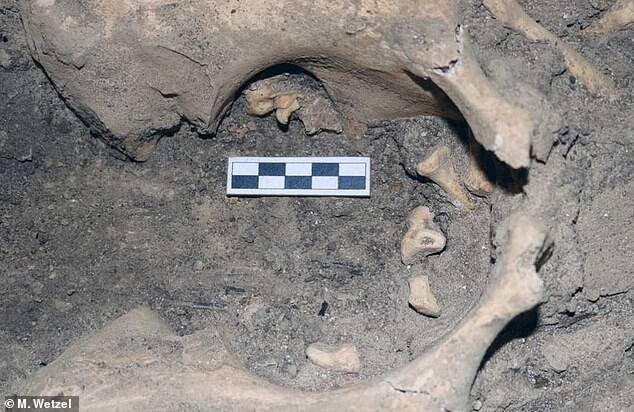Identified as a teratoma, a rare type of tumor made up of tissues like muscle, hair, or bone, the tumor is the oldest of its kind ever discovered.

A. Deblauwe/Amarna ProjectThe teratoma measured three centimeters by two centimeters.
Archaeologists excavating a tomb in Amarna, Egypt just discovered a rare ovarian tumor with teeth in the body of a woman buried over 3,000 years ago.
The tumor was identified in a new study as a teratoma, a rare type of tumor made up of various tissues like muscle, hair, teeth, or bone and which is most commonly found in ovaries or testicles.
The teratoma on the Egyptian woman was about the size of a nickel or a large grape and featured two depressions containing deformed teeth, complete with enamel-covered crowns. This find is significant because “teratomas are very rarely identified archaeologically,” explained Allison Foley, a bioarchaeologist at the College of Charleston in South Carolina, in an email to Live Science.
In fact, this tumor is one of just five archaeological teratomas ever discovered. Previously, three were found in Europe and one was found in Peru, but the one found in Egypt is the oldest known example of a teratoma, dating back to around the mid-14th century B.C.E.
The body of the woman was discovered in the North Desert Cemetery, a non-elite cemetery in the ancient city of Amarna. She was estimated to be between 18 and 21 years old when she died, and was buried with a ring featuring a figure of Bes, an Egyptian deity associated with fertility and childbirth.
The authors of the study referred to the ring as a “magico-medical” object, and the placement of the ring — on her left hand folded over her abdomen above the teratoma — suggested she “was attempting to invoke Bes to protect her from pain or other symptoms, or aid in her attempts to conceive and birth a child.”

A. Deblauwe/Amarna ProjectThe teratoma was discovered in the ovaries of an ancient Egyptian woman.
“The presence, location, and possible symbolic importance of the Bes ring as a token of protection and fertility is particularly fascinating and evocative,” Foley said.
“By 18-21 years, this individual probably would have been someone’s wife,” Gretchen Dabbs, a bioarchaeologist at Southern Illinois University Carbondale and one of the study’s authors, told Live Science.
However, Dabbs also said the woman was likely working in some fashion. Women around her age in Amarna often worked in a range of trades, including tending to gardens and livestock, brewing beer, or working on state building projects.
Amarna was founded under the pharaoh Akhenaten in 1345 B.C.E. on the eastern bank of the Nile River. At the time, Akhenaten intended the short-lived city to be a center of worship of the sun god Aten. The population was estimated to be between 20,000 and 50,000 at its peak, but the city was quickly abandoned after Akhenaten’s death in 1336 B.C.E.
Amarna has now become a rich archaeological site, with hundreds of skeletons recently found at the North Desert Cemetery alone.
In addition to being archaeologically rare, teratomas are also medically rare. The term teratoma is derived from the Greek word “teras,” meaning monster, as these tumors can look scary and freakish. In extreme cases, teratomas can sometimes even feature partial limbs and underdeveloped organs, according to Phys.
And as recently as within the last 100 years, teratomas were not broadly understood. It was only with the rise of new medical technology like the X-ray that teratomas were able to be located, identified, and treated. Back in ancient Egypt, this woman likely would have been treated for any symptoms related to her teratoma, but would not have known what was causing them.
After reading about the ovarian teratoma discovered in Egypt, read about the skin condition that makes humans look like unicorns. Or, read about the Egyptian mummy who turned out to be a pregnant woman.





